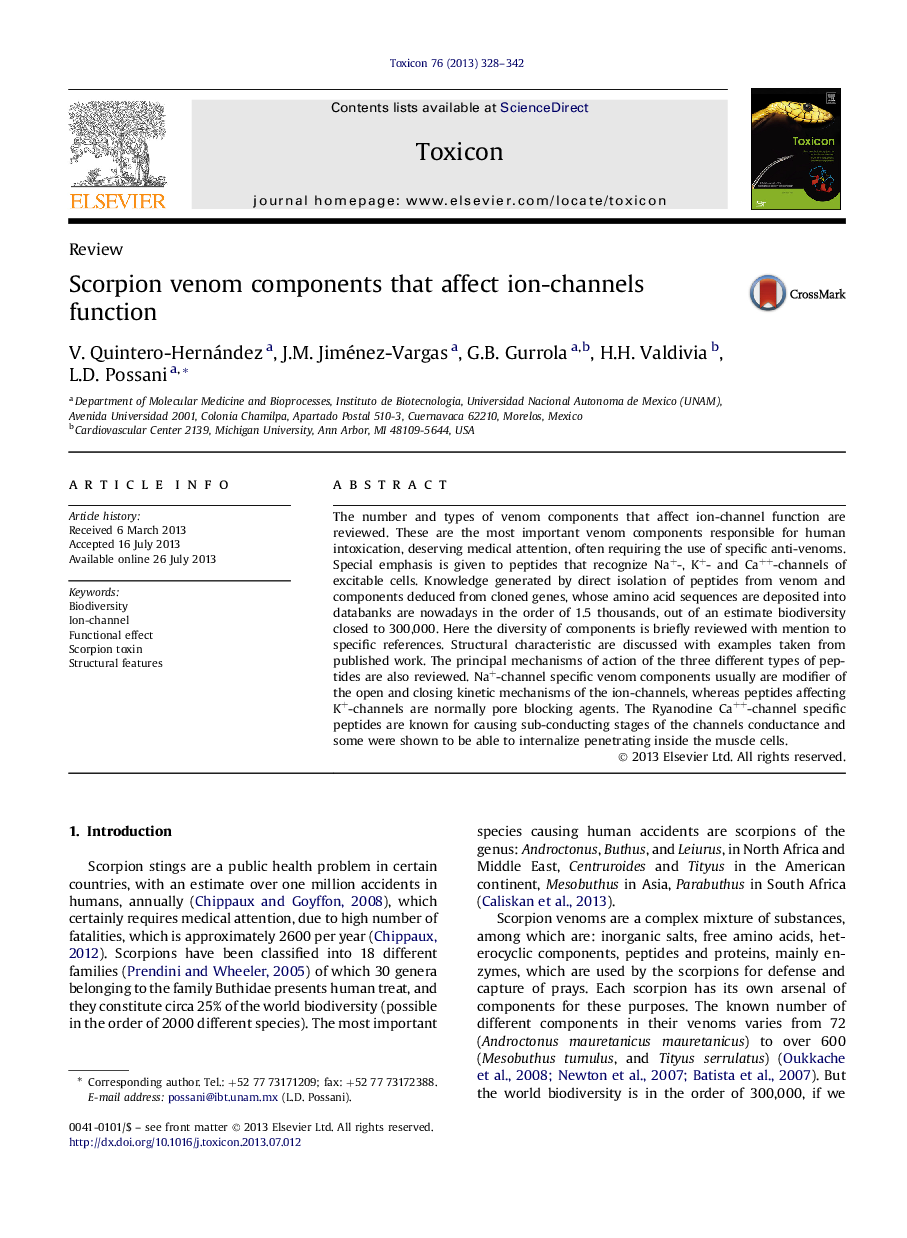| Article ID | Journal | Published Year | Pages | File Type |
|---|---|---|---|---|
| 8396794 | Toxicon | 2013 | 15 Pages |
Abstract
The number and types of venom components that affect ion-channel function are reviewed. These are the most important venom components responsible for human intoxication, deserving medical attention, often requiring the use of specific anti-venoms. Special emphasis is given to peptides that recognize Na+-, K+- and Ca++-channels of excitable cells. Knowledge generated by direct isolation of peptides from venom and components deduced from cloned genes, whose amino acid sequences are deposited into databanks are nowadays in the order of 1.5 thousands, out of an estimate biodiversity closed to 300,000. Here the diversity of components is briefly reviewed with mention to specific references. Structural characteristic are discussed with examples taken from published work. The principal mechanisms of action of the three different types of peptides are also reviewed. Na+-channel specific venom components usually are modifier of the open and closing kinetic mechanisms of the ion-channels, whereas peptides affecting K+-channels are normally pore blocking agents. The Ryanodine Ca++-channel specific peptides are known for causing sub-conducting stages of the channels conductance and some were shown to be able to internalize penetrating inside the muscle cells.
Related Topics
Life Sciences
Biochemistry, Genetics and Molecular Biology
Biochemistry, Genetics and Molecular Biology (General)
Authors
V. Quintero-Hernández, J.M. Jiménez-Vargas, G.B. Gurrola, H.H. Valdivia, L.D. Possani,
